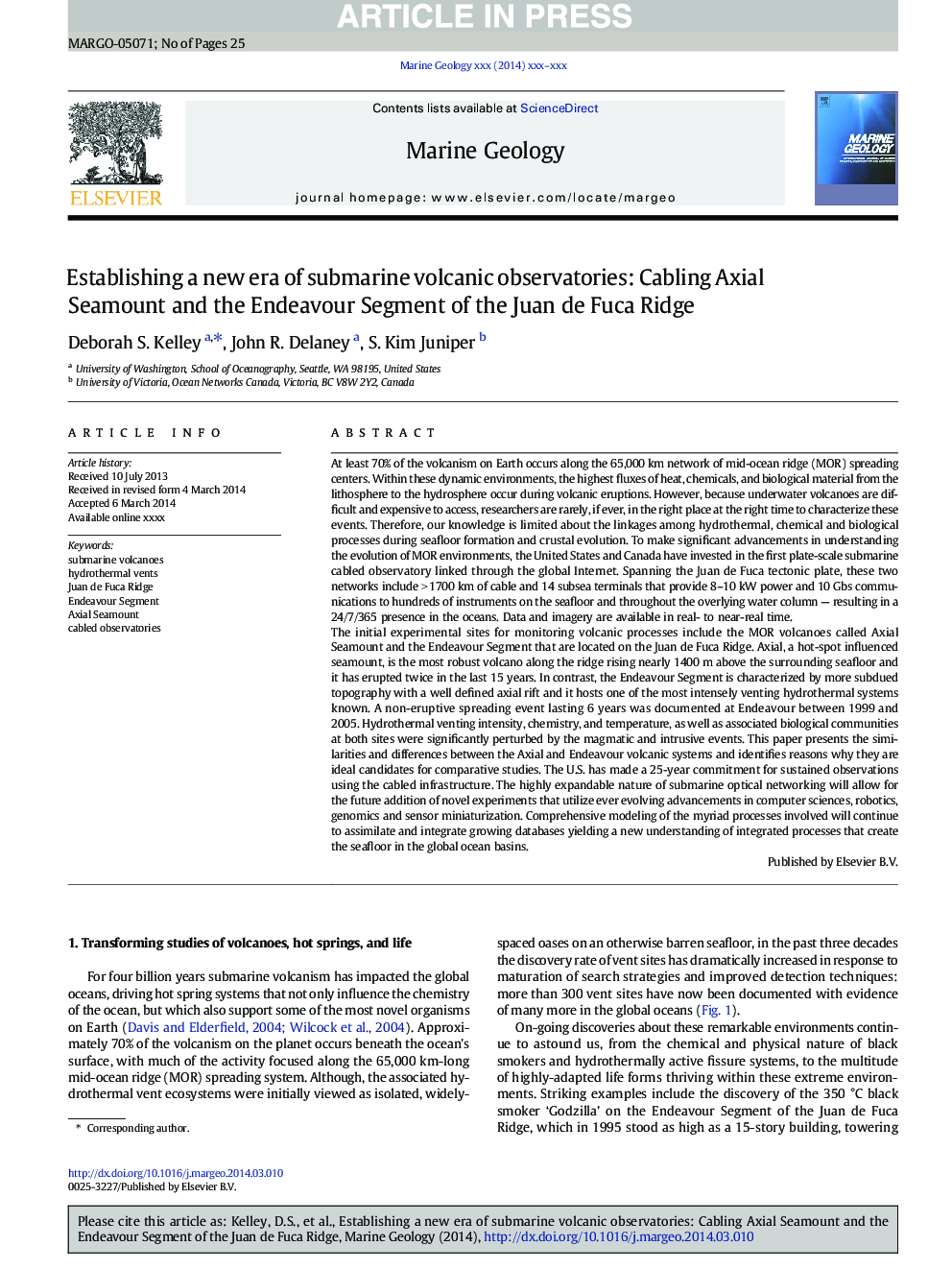| Article ID | Journal | Published Year | Pages | File Type |
|---|---|---|---|---|
| 6441682 | Marine Geology | 2014 | 25 Pages |
Abstract
The initial experimental sites for monitoring volcanic processes include the MOR volcanoes called Axial Seamount and the Endeavour Segment that are located on the Juan de Fuca Ridge. Axial, a hot-spot influenced seamount, is the most robust volcano along the ridge rising nearly 1400Â m above the surrounding seafloor and it has erupted twice in the last 15Â years. In contrast, the Endeavour Segment is characterized by more subdued topography with a well defined axial rift and it hosts one of the most intensely venting hydrothermal systems known. A non-eruptive spreading event lasting 6Â years was documented at Endeavour between 1999 and 2005. Hydrothermal venting intensity, chemistry, and temperature, as well as associated biological communities at both sites were significantly perturbed by the magmatic and intrusive events. This paper presents the similarities and differences between the Axial and Endeavour volcanic systems and identifies reasons why they are ideal candidates for comparative studies. The U.S. has made a 25-year commitment for sustained observations using the cabled infrastructure. The highly expandable nature of submarine optical networking will allow for the future addition of novel experiments that utilize ever evolving advancements in computer sciences, robotics, genomics and sensor miniaturization. Comprehensive modeling of the myriad processes involved will continue to assimilate and integrate growing databases yielding a new understanding of integrated processes that create the seafloor in the global ocean basins.
Related Topics
Physical Sciences and Engineering
Earth and Planetary Sciences
Geochemistry and Petrology
Authors
Deborah S. Kelley, John R. Delaney, S. Kim Juniper,
